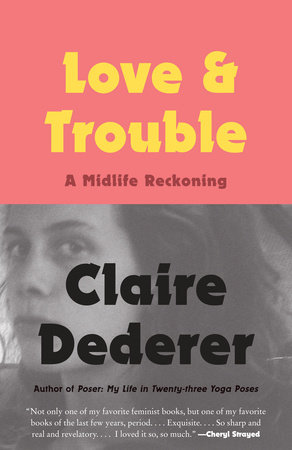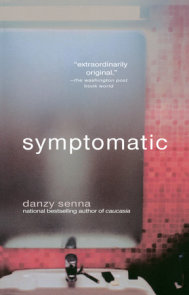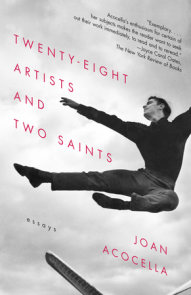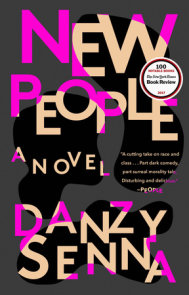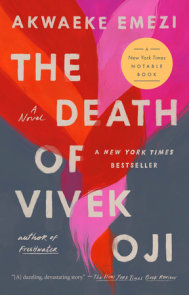READERS GUIDE
The questions, discussion topics, and other material that follow are intended to enhance your group’s conversation about Claire Dederer’s Love and Trouble, a memoir-in-essays that stridently explores the narrator’s midlife sexual reawakening through potent, often hilariously honest examinations of her past, her evolving relationship with womanhood, and the family life she’s worked hard to create but craves escape from now and again.Questions and Topics for Discussion
1. The chapters in this memoir all take different forms—from straightforward narrative to letters to lists to excerpts from diaries. Why do you think the narrator chose to write about her past, and her former self, in this way? Which forms did you find most effective and entertaining?
2. Discuss the narrator’s relationship with her daughter. What frustrates and scares her about bringing up Lucy as a woman today? And how is her realization that they’re more alike than not—she writes, “I’m surprised all eighth-graders don’t just lie down on the grocery-store floor and drum their heels against the linoleum and weep out of sheer frustration. And then I thought: This is the perfect description of middle age. Lucy and I were both in a state of ongoing crisis; we were holding each other down, keeping each other from floating away” (48)—indicative of how she reidentifies with her younger self throughout the book?
3. Discuss the narrator’s relationships with other women. What makes her hesitant to befriend other women even as she finds herself drawn to them sexually? How does her own rejection of traditional femininity—in how she describes her masculine appearance and dress—reflective of this complicated sensibility?
4. Why do you think the narrator so fervently seeks out sex when she’s young (a question that she admits her literary agent asked her while writing this book)? Consider her statement about the “Love Square” her brother invents in their childhood home in response: “I kept standing there, waiting for love, so terrible, to come and change me. Nothing. Motes drifted” (82).
5. In addition to seeking out love—physical and emotional—the narrator has a sense of wanderlust, traveling around the world in her twenties in search of something not her home. What does she find in the places she visits and how does she change depending on where she is at any given time?
6. What are some of the different personas and characters the narrator looks up to throughout her life? Consider her film idols described in the essay “Jump Cuts,” and the attitude she assumes while working in the movie theater. How does the idea of a movie’s fleeting glamour, or the fictional world of a novel, reflect her own awareness of the impermanence of certain feelings and satisfactions?
7. Discuss the narrator’s relationship to literature and writing. How is this art form a safe place for her but also yet another arena for stress, per her diary entry “Everyone’s a critic here, and the critics are always, always winning” (131)? What writers and books are most influential to her coming-of-age as a woman and as a sexual being?
8. Consider the graph of Sexual Activity vs. Happiness on p. 118. What does the narrator take away from realizing the inverse relationship of these two factors? How much does this knowledge change her behavior or sexual longing, if at all? And what does the form and voice of this essay (“Recidivist Slutty Tendencies in the Pre-AIDS-Era Adolescent Female”) allow the narrator to do when examining her sexual tendencies in hindsight and from a distance?
9. The narrator is keenly aware of the role that men play in her life, even of her craving their gaze and domination; she writes in “On Victimhood,” “Sex has often, for me, had to do with power and vulnerability, with victims and perpetrators” (220). Why do you think she assumes this stance of victimhood, and does it ever get reversed? What does the act of writing help her to claim ownership of in her own past and sense of self?
10. At what point did you sense a shift in the narrator’s priorities toward settling down and having a family, including in a new role as a mother? Was there a noticeable change in the narrative at this moment, and if so how would you describe it?
11. The diary entries following each essay are from a broad period of time and don’t follow chronological order, and yet many of them reflect a similar mentality and preoccupations. What does this suggest about an individual’s fixed personality, and specifically about Dederer herself? What does she mean in the last essay when she writes, “I was in my twelve, and my twenty, and my forty-seven all at once. All I could do was keep going” (236).
12. Have you ever kept a diary or journal, and if so, have you ever read any of your previous entries? What compels the narrator to do so in the course of this experiment, and how did your reading excerpts of her diary shape your impression of her? What does it also help her uncover about herself, if anything?







